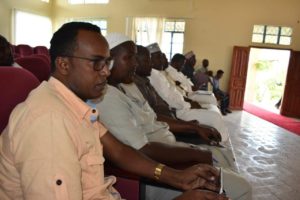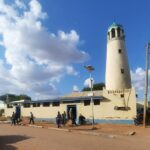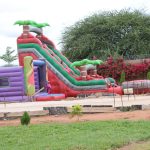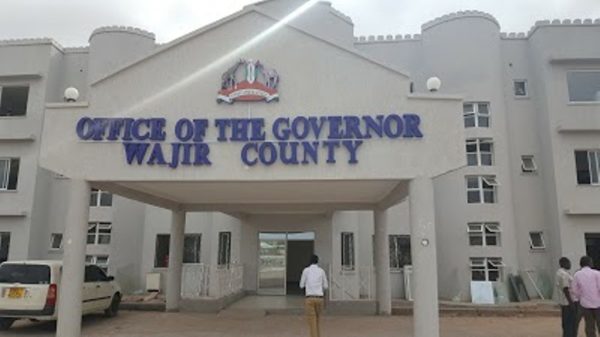By Ubah Kahiye
I was brought up in a small dusty village in the western hinterlands of Wajir County. Here, I used to trek for long and join a beeline of people to draw water from an old borehole with salty water that both humans and livestock relied on.
The only moments I got a deserving respite from the boring and tiring mission of drawing water from the village borehole was when I went for holidays to Wajir town where access to water was different, every compound had a well, no long queues and there was no trekking.
Two decades later, the tables are turned. I live and work in Wajir town, my childhood holiday destination where access to water is no longer the same. The water well in my home runs dry every now and then and when this happens I vividly recall the long queues, the unending struggle for water.
Wajir is one of the oldest towns in Northern Kenya with an estimated 12,000 households. Many of these homes rely on underground water drawn through shallow wells, only less than one percent of its population have access to piped water-a grim reality.
The water table in Wajir town is very low and traditionally the town was one of the few places that hardly faced water shortages, with each household having its own water well that is around 20 feet deep allowing residents to draw water easily or using a generator pump for the few who can afford.
The story is different today, with the current increase in human and livestock populations coupled with perennial drought conditions, underground water levels have run low and consequently many wells have dried.
The cost of getting water for home-use is increasingly getting expensive with poor families struggling to drink, cook and wash. These days we spend as much as Ksh. 10,000 each time we excavate a well deeper for more water.
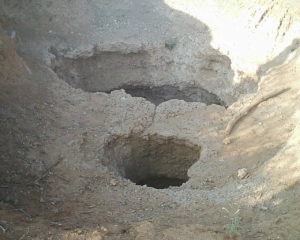
The acute shortage of water in Wajir can be attributed to two main factors: number one is climate change that has resulted in continuous dry spells and number two is the increasing demand for water consumption that has left the resident with dry wells.
And with the little available water, safety is a concern for the overwhelming majority of the town’s residents. Recent studies revealed that there is a huge amount of contaminants with high levels of nitrates and other elements getting into the shallow water table often raising public health concerns.
Wajir’s unconventional human waste disposal that heavily relies on obsolete bucket latrines is the biggest danger when it comes to the safety of water. This system of sanitation puts many of the wells that dot the town to be highly susceptible to disease-causing pathogens often occasioning outbreak of food and water-borne diseases.
With these persistent problems, relevant actors need to come together and chart along term plan to find a lasting solution. There is a growing fear that within the next few years if the water crisis is not arrested then Wajir may become totally inhabitable.
While there have been plans and discussions of piping water from the Merti aquifer in Habaswein and donors ready to fund the project, lack of political framework and proper policy have rendered it difficult and such projects stalled altogether.
There are few initiatives that can be done to arrest the exacerbating situation and this includes water harvesting by households. Although Wajir is largely dry, in banner seasons it receives rains twice a year and it normally lasts for a maximum period of 30 days each. Efforts can be made to conserve this water for domestic use. Individual residents, governments, and NGOs need to invest in this by supporting households with gutters and water tanks for collection of rainwater. This will reduce pressure on underground water aquifer.
Similarly to reduce pressure and cost of wells, efforts need to be made to rescue the numerous number of wells by encouraging household to share wells. For instance, instead of each household having its own well, a group of 10 or 20 households can use one well and the water piped to all of them.
The money that would have been used to dig new wells can be used to rehabilitate and supply the rest. However for this to work there is a need for proper town planning and designs so that each zone will have a few number of designated wells that have been properly surveyed and located at strategic points.
The town administration also needs to clear the clogged waterways and those swamps that have now been inhabited and built on. These are very important in terms of rejuvenating and recharging the aquifer during the rainy season while preventing the flooding that has been persistent in the town center whenever it rained.
All in all, stakeholders need to invest a long-term visioning and planning for the town and county at large. We have been guilty of non-priority development projects that are detrimental to each other and it may be too late to realize that we need to live with nature and water represent life.
——————————————————————–
Ubah Kahiye is a development worker based in Wajir.



